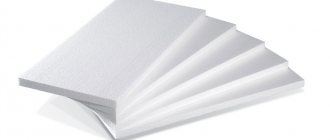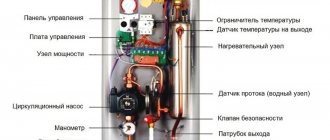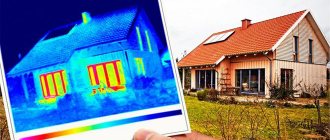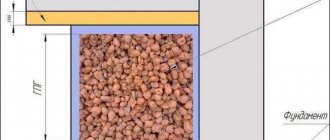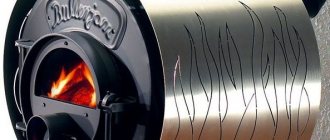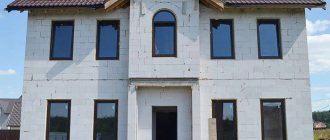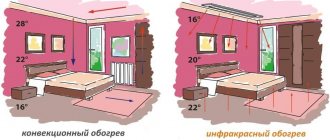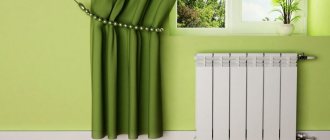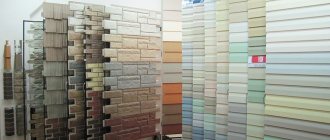Operating principle of the development
Modern technology for the production of penoplex is a continuous process of mixing granulated polystyrene, occurring at elevated temperatures, with extrusion from an extruder and injection of a freon-free mixture based on CO2.
The result is a material with a fine-cell structure. Then, after extrusion from the extruder, the remaining freon-free mixture is replaced with air very quickly. The successful implementation of this technology was facilitated by equipment for the production of penoplex.
The hardware line is designed for the production of foamed polystyrene sheets. Only recycled material can be used as raw material, which significantly reduces the cost of already inexpensive production. The equipment pays for itself fairly quickly.
Stages of operation of a line for the production of polystyrene foam
At the first stage, the feedstock is placed in a loading block, in which, in accordance with the proportions, the granules are supplied to the foamer compartment. This department is equipped with an extruder - a device that gives polystyrene foam the desired structure by foaming in a nitrogen environment. During this process, the granules increase in size. For construction needs, extruded polystyrene foam requires a denser composition, which is achieved through one foaming cycle. However, this material is widely used in other industrial areas, for example, in packaging fragile goods. For this, a lighter composition is used, which is obtained by repeated foaming. An additional cycle follows the first, but after complete cooling of the raw material.
Extruder for polystyrene foam
In the next step, the XPS production line places the raw material into a aging hopper. Here the polystyrene foam should take in air. This process lasts 12 hours. It is air saturation that provides high thermal insulation characteristics. At the end of the allotted time, the granulated mass is sent to the block formation department. The raw material is heated to ensure maximum bonding. The block is then cooled and then sent to the cutting table.
Using hot strings of refractory metal, blocks are cut in accordance with the specified length and width parameters. The most common and popular parameters of polystyrene foam sheets:
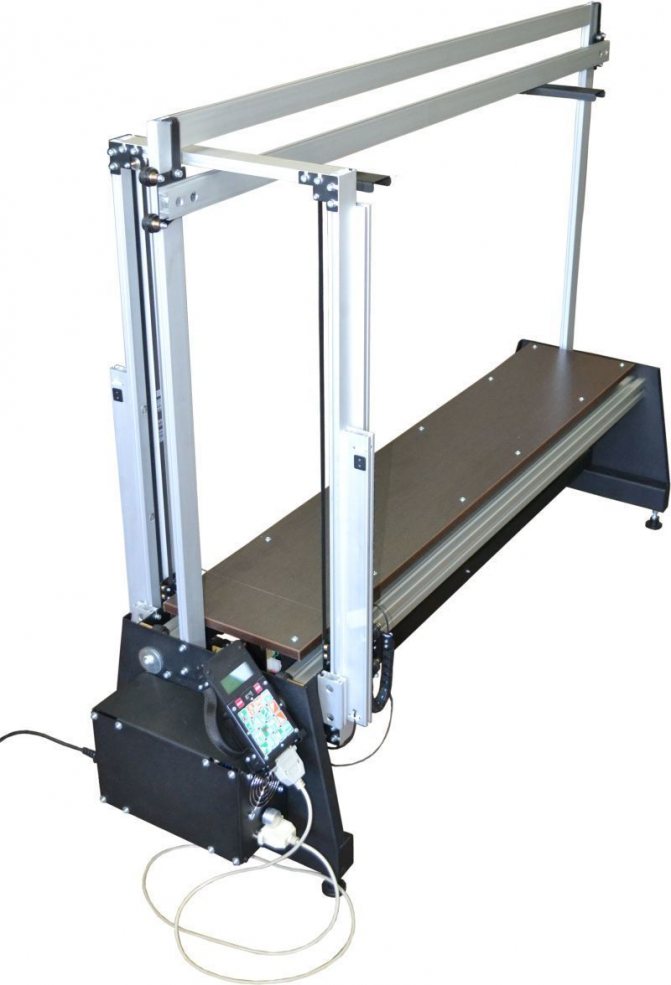
String cutting machine for polystyrene foam
- Length – 1200, 1250, 2450, 2500 mm.
- Width – 600, 900, 1200 mm.
- Thickness – 20, 40, 80, 120 mm.
As a result of cutting, waste of finished raw materials is formed, which can be processed. Lines for the production of XPS extruded polystyrene foam can be sold with an additional unit for processing recyclable materials. In it, the trimmings are crushed into crumbs, which can then be added to the granules at the loading stage. But there is a nuance here - the volume of processed waste should not exceed 10% of the total volume of loaded raw materials.
Finished cut blocks of extruded polystyrene foam are packaged by the manufacturer at its discretion. Extruded polystyrene foam can be stored at any temperature and for an unlimited period.
Installation of insulation
For interior work, penoplex is an invaluable material, since due to its low weight, small thickness of the slabs and ease of cutting, it is easy to work with.
Stages of installation work:
- preparation, cleaning and leveling of walls;
- planting on an adhesive base, and then nailing foam sheets;
- strengthening with a reinforcing layer;
- leveling the surface of the structure;
- finishing.
In addition to excellent thermal insulation qualities, penoplex is an excellent sound absorber. A wall covered with it will become a reliable barrier not only to the cold, but also to extraneous sounds.
Balcony insulation with penoplex: no one is dissatisfied!
Choosing the right insulation is very important. Why? First, you spend your money on it. Secondly, if the insulation is installed incorrectly, your money is lost!
Penoplex is not foam plastic
Penoplex or expanded polystyrene is an insulation material containing closed cells filled with natural or carbon dioxide. Someone will exclaim: “Yes, this is the same polystyrene foam!” But, although both insulation materials are made from polystyrene, penoplex and polystyrene foam are not the same thing. After all, they are made in different ways, which affects their properties.
Penoplex structure Cells in foam plastic are located at a greater distance from each other than in penoplex
To make polystyrene foam, polystyrene is treated with water vapor. As a result, the polystyrene molecules swell and adhere to each other. But over time, the connection between them weakens, and the foam crumbles.
Penoplex is produced by extrusion. That is, polystyrene is first melted and then foamed (the cells are filled with gas). Thanks to melting, the connection between the cells becomes strong, like the insulation itself.
Advantages and disadvantages of penoplex
Why do some people love penoplex so much? And why does someone, on the contrary, not want to use it?
Unfortunately, penoplex still burns
Disadvantages of penoplex
- penoplex is more expensive than other insulation materials. Although mineral wool, for example, is also not a cheap pleasure
- Penoplex crumbles under the influence of the sun. So don’t leave a balcony insulated with penoplex unfinished for a long time
- if you have mice on your balcony, it is better not to use such insulation (as well as polystyrene foam).
After all, most likely they will make a whole tunnel in it - penoplex manufacturers claim that it does not burn. However, in practice we observe the opposite. And how can it not burn when it is part of the group of highly flammable substances (G4)?
This truth will scare someone away.
However, penoplex has many advantages that are also worth your attention.
The cells in penoplex are so harsh... that they do not absorb water at all
- does not absorb water, so you can safely lay it without additional vapor and waterproofing
- Thanks to its high density, it perfectly insulates the balcony from the cold from the street and does not release heat from the room. Polystyrene foam and mineral wool cannot do this.
- designed for a wide temperature range: from -50 to +75
- withstands heavy loads without collapsing. As a rule, the load resistance is 0.2 - 0.27 MPa (Mega Pascal). If we translate it into a more understandable value, we get 2 – 3.7 kg/cm2 (kilograms of force per square centimeter of material). For comparison, foam has from 0.5 to 0.2 (very rarely) MPa
- installing penoplex is a pleasure! It cuts easily with a knife and does not crumble at all.
- Penoplex can last up to 50 years!
Some brands of penoplex have two names - old and new, to make it more convenient for the buyer to determine which penoplex he needs. Example: even a beginner in renovation will understand where they use “Penoplex Roofing” (in the old way - Penoplex 31).
Penoplex Comfort (Penoplex 31 c) is frost-resistant, well suited for complete thermal insulation of houses, apartments, as well as loggias and balconies. It is also used to insulate the foundations of various structures, swimming pools, and even underground networks.
Penoplex Wall (Penoplex 31) has the lowest thermal conductivity coefficient of all penoplex brands. If the balcony is +25 degrees (+ - 5), it lets only 0.03% of heat out and cold in! Therefore, it is more often used to insulate walls and bases - where the wind constantly blows.
Penoplex Foundation is used to insulate foundations and is laid on balcony slabs from below with Penoplex 45, Fundamant, etc. insulate a football field so that football players do not catch a cold Several types of Penoplex are suitable for covering the base of a building and a balcony from the outside Finally, Penoplex Wall is suitable for internal insulation of a balcony
Penoplex Roofing (Penoplex 35) is used for insulating roofs of any type, including roofs and ceilings on balconies. It has higher fire resistance than other brands. It belongs to normally flammable substances (G3), while others are generally highly flammable.
Penoplex Foundation is used for insulation of floors and foundations. It has the highest compressive strength - 1 square centimeter can support up to 27 kilograms of weight! There may never be such heavy loads on balconies, but you will be proud of such insulation.
Penoplex 45 has the highest density. One m3 can withstand 35-47 kilograms (Penoplex 31 has 25-32 kg/m3). Therefore, it is not surprising that they are used to insulate building foundations, railways and runways in cold regions. The ground under the penoplex does not thaw even in the warm season, and buildings and roads do not sag.
These brands were created for different needs. But no one bothers to insulate the balcony from top to bottom, for example, with Penoplex Roofing or Penoplex 45. After all, the qualities that are really useful on the balcony are almost the same for all brands.
We monitored prices for penoplex in Moscow stores and calculated the average cost of different brands.
Average prices for penoplex in Moscow:
| Insulation brand | Size | Packaged | Price per package rub. | ||||
| Length mm | Width mm | Thickness mm | sheets | M2 | M3 | ||
| Penoplex Comfort (31c) | 1200 | 600 | 20 | 18 | 13 | 0,259 | 1120 |
| 30 | 12 | 8,5 | 0,259 | 1120 | |||
| 40 | 9 | 6,5 | 0,259 | 1130 | |||
| 50 | 7 | 5 | 0,252 | 1040 | |||
| 100 | 4 | 3 | 0,288 | 1260 | |||
| Penoplex Wall (31) | 1200 | 600 | 20 | 18 | 13 | 0,259 | 1150 |
| 30 | 14 | 10 | 0,302 | 1340 | |||
| 40 | 10 | 7 | 0,288 | 1290 | |||
| 50 | 8 | 6 | 0,288 | 1220 | |||
| 60 | 7 | 5 | 0,302 | 1430 | |||
| 100 | 4 | 3 | 0,288 | 1400 | |||
| Penoplex Roofing (35) | 1200 | 600 | 20 | 20 | 14,5 | 0,288 | 1310 |
| 30 | 14 | 10 | 0,3 | 1380 | |||
| 40 | 10 | 7 | 0,288 | 1330 | |||
| 50 | 8 | 5,5 | 0,288 | 1260 | |||
| 100 | 4 | 3 | 0,288 | 1440 | |||
| Penoplex Foundation | 1200 | 600 | 50 | 8 | 6 | 0,288 | 1330 |
| Penoplex 45 | 2400 | 600 | 40 | 10 | 14,4 | 0,6 | 1450 |
In addition to the material, you will have to buy beams for sheathing, fasteners, etc. And if you do not insulate the balcony yourself, include in the calculation the cost of the work of the master (Cost of work, prices for insulation of balconies and loggias in Moscow).
We insulate the balcony with penoplex: methods and videos
Penoplex is inserted into the sheathing and secured with plastic-lined nails
You can insulate a balcony with penoplex in different ways. For example, insert penoplex into the sheathing. And then additionally secure it with special dowels with a wide plastic head. Moreover, there are 2-4 such dowels per sheet of insulation.
If you are not going to cover the insulation, you can do without sheathing. Just place the penoplex on the dowels. Or glue it with construction adhesive, foam or cement mortar. Believe me, these substances will not harm penoplex in any way!
How to install penoplex, watch the video: Insulating a balcony/loggia with penoplex
We wish that it is always warm on your balcony!
Source: //OknaNaGoda.com/balkony-lodzhii/utepleniye/uteplenie-penopleksom.html
Advantages
Revolutionary technology and advanced equipment for the production of penoplex make it possible to create a truly unique thermal insulation material with undeniable advantages:
- environmental friendliness;
- low thermal conductivity, high noise reduction;
- fire safety (ignition temperature about 500 oC);
- durability, ease of use;
- low cost.
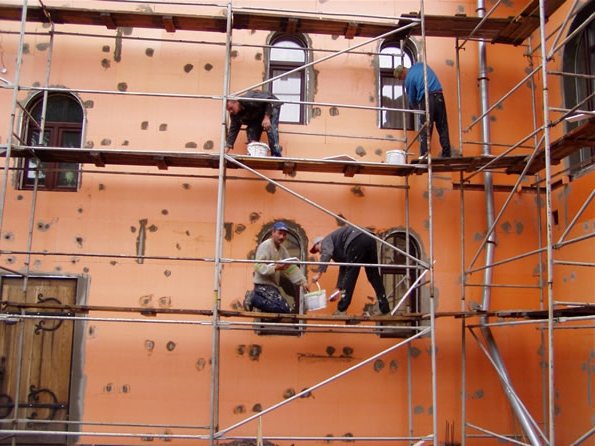
Equipment
To make penoplex you will need the following equipment:
- aging bunker;
- pre-foaming agent;
- crusher;
- steam accumulator and steam boiler;
- vacuum installation;
- compressor;
- fan;
- device for shredding unused foam;
- tables and mechanisms for cutting material into sheets.
You will also need an automatic system control panel. Equipment can be purchased as a set or separately. When choosing, it is recommended to pay attention to machines from European manufacturers. Due to its high quality and performance, this equipment quickly pays for its considerable cost. An environmentally friendly production line that produces penoplex without the use of freon costs approximately $200,000.
Flaws
Low adhesion ability can become an obstacle to the active use of penoplex. This problem can be eliminated by a simple replacement: when performing external work, use a related material - polystyrene foam.
Technologies and equipment are constantly being improved; modern realities place increased demands not only on production, but also on insulating materials. Penoplex fully meets all these requirements. This means that the equipment on which it was produced is high-tech and competitive.
Manufacturing technology
The material is produced using the extrusion method:
- Ordinary polystyrene granules are exposed to high temperatures and pressure. After this treatment, polystyrene turns into a mass similar in consistency to whipped cream.
- The resulting mass is passed through an extrusion device, as a result of which it acquires a structure permeated with small pores.
- At the final stage, the finished products are packaged in film.
On cheaper equipment, a catalyst is used in the production of polystyrene - a mixture of light freon and carbon dioxide. At the end of the production cycle, freon evaporates from the cells of the finished material, and air fills its place. The material produced in this way has the following characteristics:
- Low moisture absorption, not exceeding 0.6% of the total volume of the sheet exposed to water for a month. In this case, moisture penetrates only into the nearest cells, without spreading throughout the entire volume of the insulation.
- Low thermal conductivity coefficient.
- High resistance to compression, which allows it not to change dimensions under the influence of significant loads.
- Low vapor permeability.
- Inability to react chemically with many substances during construction work.

